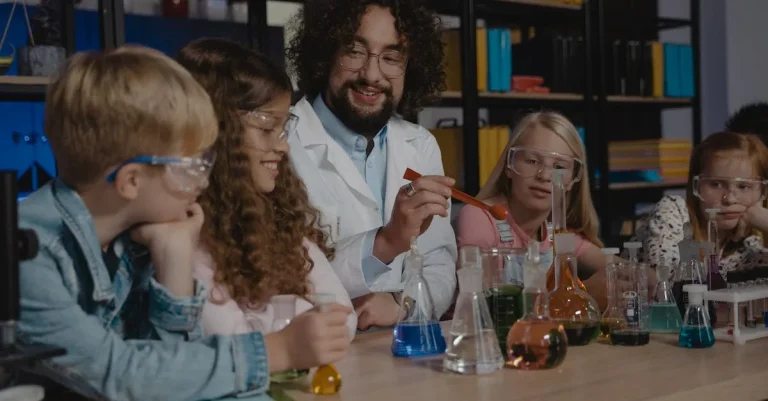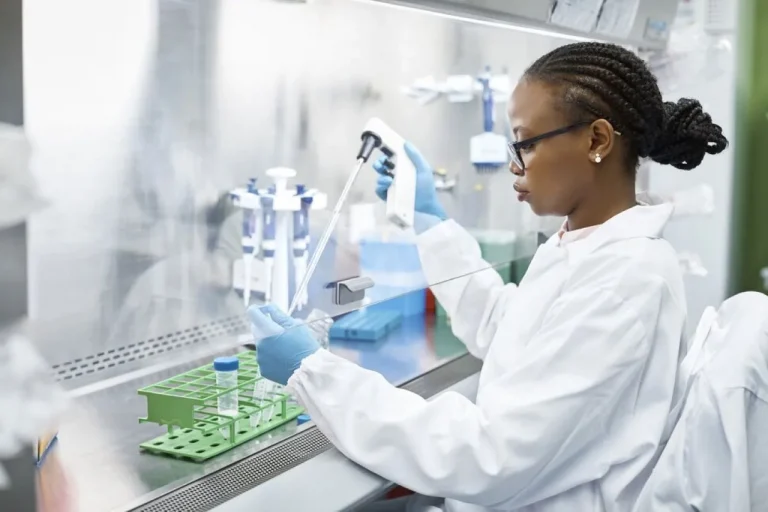Examining The Most Common Classroom Microscope: The Compound Light Microscope
School science labs are filled with an array of equipment, but one essential tool found in most classrooms is the microscope. This device allows students to observe microscopic structures and organisms in fine detail.
If you’re short on time, here’s a quick answer: The compound light microscope is the type used most often in science classes due to its versatility, ease of use, and affordable cost.
In this in-depth guide, we’ll examine why the compound light microscope has become the standard classroom microscope. We’ll look at how its design and capabilities make it ideal for basic lab work, along with some of its limitations and situations where other microscope types are preferable.
What is a Compound Light Microscope?
A compound light microscope is a type of microscope commonly used in classrooms and laboratories for scientific observation and research. It is called a “compound” microscope because it uses a combination of lenses to magnify the specimen being observed.
The “light” refers to the use of visible light to illuminate the specimen, allowing for detailed examination.
Illumination System
The illumination system of a compound light microscope is an essential component that provides the necessary light for observing the specimen. It typically consists of a light source, such as a halogen bulb or LED, positioned beneath the stage.
The light passes through a condenser lens, which focuses and directs the light onto the specimen. This system ensures that the specimen is well-lit and visible under the microscope.
Objective Lenses
The objective lenses are the primary lenses responsible for magnifying the specimen. Compound light microscopes usually have multiple objective lenses of different magnification powers, such as 4x, 10x, 40x, and 100x.
These lenses are mounted on a rotating nosepiece, allowing the user to easily switch between them. By combining the magnification of the objective lens with that of the eyepiece lens, the compound light microscope can provide high-resolution images of the specimen.
Eyepiece Lenses
The eyepiece lens, also known as the ocular lens, is located at the top of the microscope and is where the user looks through to observe the specimen. It typically has a magnification power of 10x. When combined with the magnification of the objective lens, the total magnification of the compound light microscope can be calculated.
For example, if the objective lens has a magnification of 40x and the eyepiece lens has a magnification of 10x, the total magnification would be 400x.
Key Benefits of the Compound Light Microscope
Magnification Capabilities
The compound light microscope is widely used in classrooms due to its impressive magnification capabilities. With a compound lens system consisting of multiple lenses, this microscope can achieve high levels of magnification, allowing students to observe and study microscopic organisms, cells, and structures with great detail.
The magnification power of a compound light microscope typically ranges from 40x to 1000x, providing students with the ability to explore the microscopic world.
Ease of Use
One of the key advantages of the compound light microscope is its user-friendly design, making it suitable for students of all ages and skill levels. The microscope is equipped with adjustable focus knobs, allowing users to easily focus and sharpen the image.
Additionally, it usually comes with a built-in light source that illuminates the specimen, enhancing visibility and making it easier to observe the details under the microscope. The compact size and lightweight nature of the compound light microscope also contribute to its ease of use, allowing students to handle and carry it with ease.
Cost Effectiveness
The compound light microscope offers a cost-effective solution for classrooms and educational institutions. Compared to other types of microscopes, such as electron microscopes, the compound light microscope is relatively affordable.
It provides a good balance between affordability and functionality, making it accessible to schools with limited budgets. Furthermore, the compound light microscope requires minimal maintenance and has a long lifespan, reducing the need for frequent replacements or costly repairs.
Common Classroom Uses of Light Microscopes
Examining Plant and Animal Cells
One of the most common uses of a compound light microscope in the classroom is to examine plant and animal cells. By using a microscope, students can observe the intricate structures and organelles within cells, such as the nucleus, mitochondria, and chloroplasts.
This allows them to gain a better understanding of how cells function and the differences between plant and animal cells. Students can also explore different types of tissues and learn about cell division through the observation of mitotic phases.
By studying cells under a microscope, students can appreciate the complexity and beauty of the microscopic world.
Observing Bacteria
Another important application of the compound light microscope in the classroom is the observation of bacteria. Bacteria are microscopic organisms that exist virtually everywhere in our environment. With a microscope, students can examine different types of bacteria and learn about their morphology, structure, and behavior.
This knowledge is crucial in fields such as microbiology and medicine, where understanding the characteristics of bacteria is essential for diagnosing and treating diseases. By observing bacteria under a microscope, students can develop their skills in identifying and studying these microorganisms.
Analyzing Rocks and Small Fossils
In addition to studying living organisms, the compound light microscope is also useful for analyzing non-living materials such as rocks and small fossils. Geology and paleontology are two fields that heavily rely on microscopes for the examination of these specimens.
By using a microscope, students can identify the mineral composition of rocks, study the texture and formation of fossils, and even analyze the microscopic structures within them. This allows for a better understanding of Earth’s history and the processes that have shaped our planet over millions of years.
Limitations of Light Microscopes
Resolution Constraints
While the compound light microscope is a powerful tool for examining microscopic specimens, it does have its limitations. One of the main constraints is the resolution of the microscope. The resolution of a microscope refers to its ability to distinguish between two closely spaced objects.
Light microscopes have a limited resolution due to the wavelength of light used. The wavelength of visible light ranges from about 400 to 700 nanometers, which restricts the level of detail that can be observed.
This means that structures smaller than the wavelength of light may not be clearly visible under a light microscope.
2D Images
Another limitation of light microscopes is that they produce two-dimensional (2D) images. This means that the depth of a specimen cannot be accurately represented. While you can observe the top and bottom layers of a specimen, the middle layers are often obscured.
This can make it challenging to fully understand the three-dimensional structure of a specimen. However, scientists have developed techniques such as confocal microscopy to capture a series of images at different depths and reconstruct them into a 3D representation.
Manual Operation
Operating a compound light microscope requires manual adjustments and fine-tuning. This can be time-consuming and may require some level of expertise. Achieving the desired focus and clarity can be a delicate process, especially when observing delicate or complex samples.
Additionally, the preparation of specimens for observation under a light microscope often involves staining or mounting on slides, which can be a tedious and delicate process. Despite these limitations, light microscopes continue to be widely used in classrooms and laboratories due to their affordability, ease of use, and versatility.
When Advanced Microscopes Are Necessary
While the compound light microscope is the most common microscope found in classrooms, there are instances when advanced microscopes are necessary to study certain specimens in greater detail. These advanced microscopes offer higher magnification capabilities and specialized imaging techniques that allow scientists and researchers to explore the microscopic world with greater precision.
Electron Microscopes
Electron microscopes are one of the most powerful tools in the field of microscopy. Unlike the compound light microscope, electron microscopes use a beam of electrons instead of light to magnify the specimen.
This allows for much higher magnification and resolution, making it possible to observe objects at the nanoscale level. Electron microscopes are commonly used in fields such as biology, materials science, and nanotechnology.
Confocal Microscopes
Confocal microscopes are another type of advanced microscope that offer enhanced imaging capabilities. These microscopes use a laser beam to scan the specimen and create a three-dimensional image. By eliminating out-of-focus light, confocal microscopes produce sharper and clearer images compared to traditional microscopes.
This makes them particularly useful in fields such as cell biology, neuroscience, and pathology.
Fluorescence Microscopes
Fluorescence microscopes are specifically designed to study fluorescently labeled specimens. These microscopes use specific wavelengths of light to excite fluorescent molecules in the sample, causing them to emit light of a different color.
This technique allows researchers to visualize specific molecules or structures within the specimen, providing valuable insights into their localization and function. Fluorescence microscopes are commonly used in fields such as molecular biology, immunology, and genetics.
It’s important to note that while these advanced microscopes offer incredible capabilities, they also require specialized training and expertise to operate effectively. Additionally, the cost of these microscopes is typically higher compared to compound light microscopes.
However, their ability to provide detailed and precise imaging makes them indispensable tools in various scientific disciplines.
Conclusion
With its combination of magnification power, ease of use, and affordability, the compound light microscope is suited for most classroom science activities. While it has some limitations, it provides an accessible entrypoint for students to explore the microscopic world.
As students advance to more complex lab techniques and analyses, they may eventually utilize other specialized microscopes. But the trusty compound light microscope remains the standard classroom workhorse.







